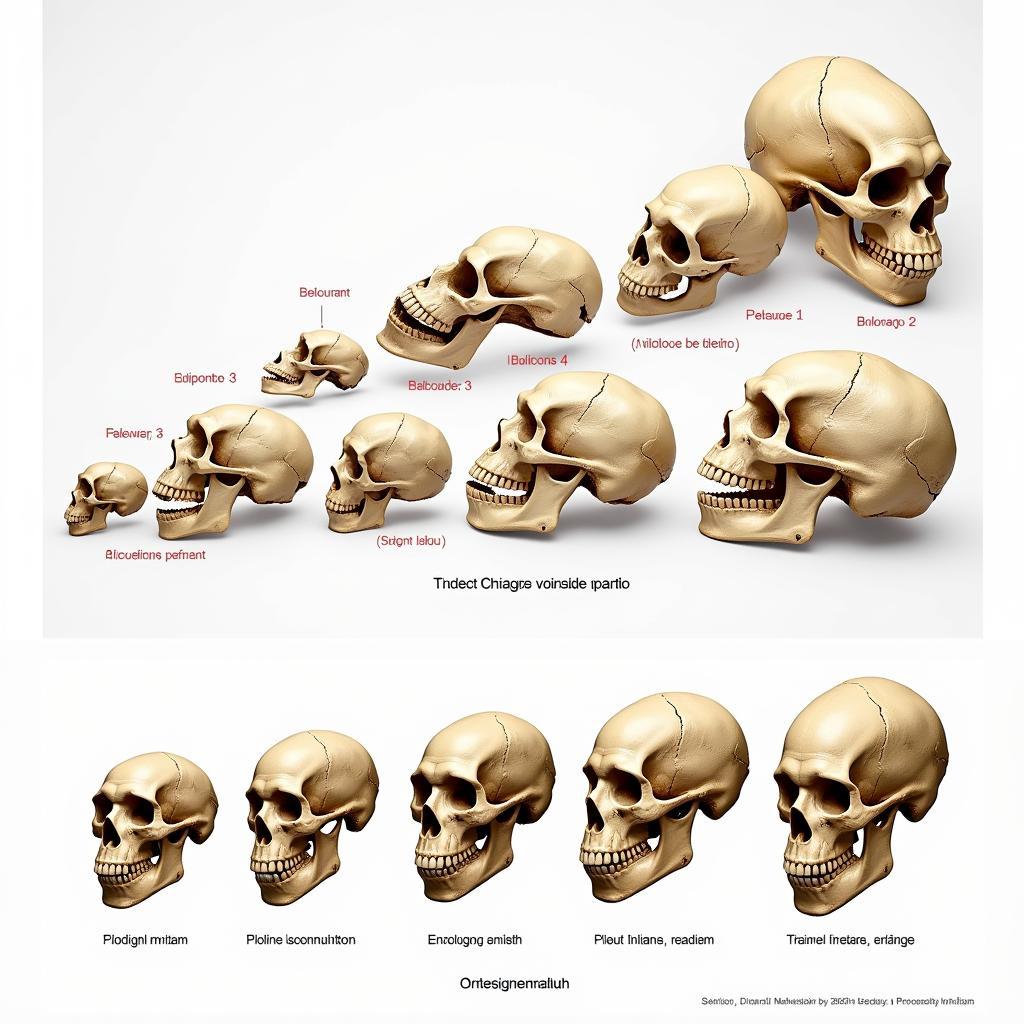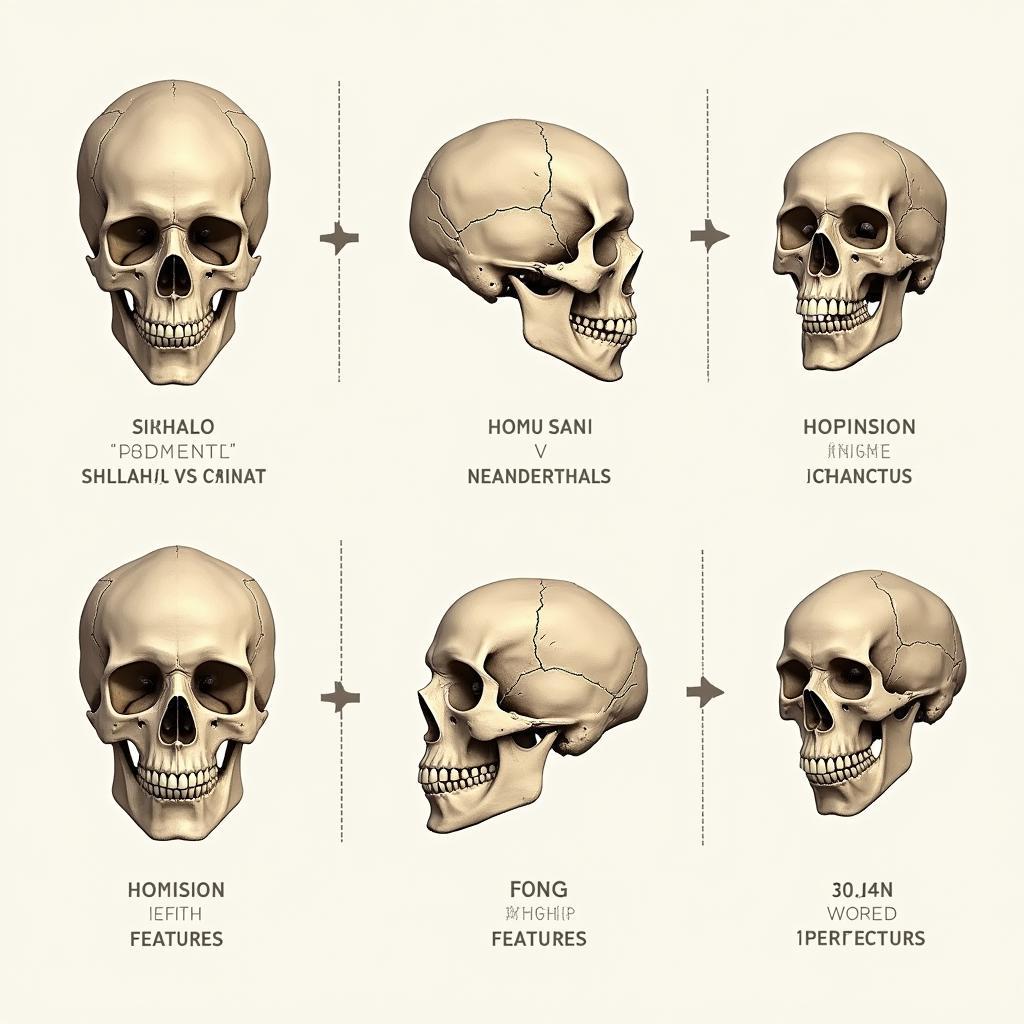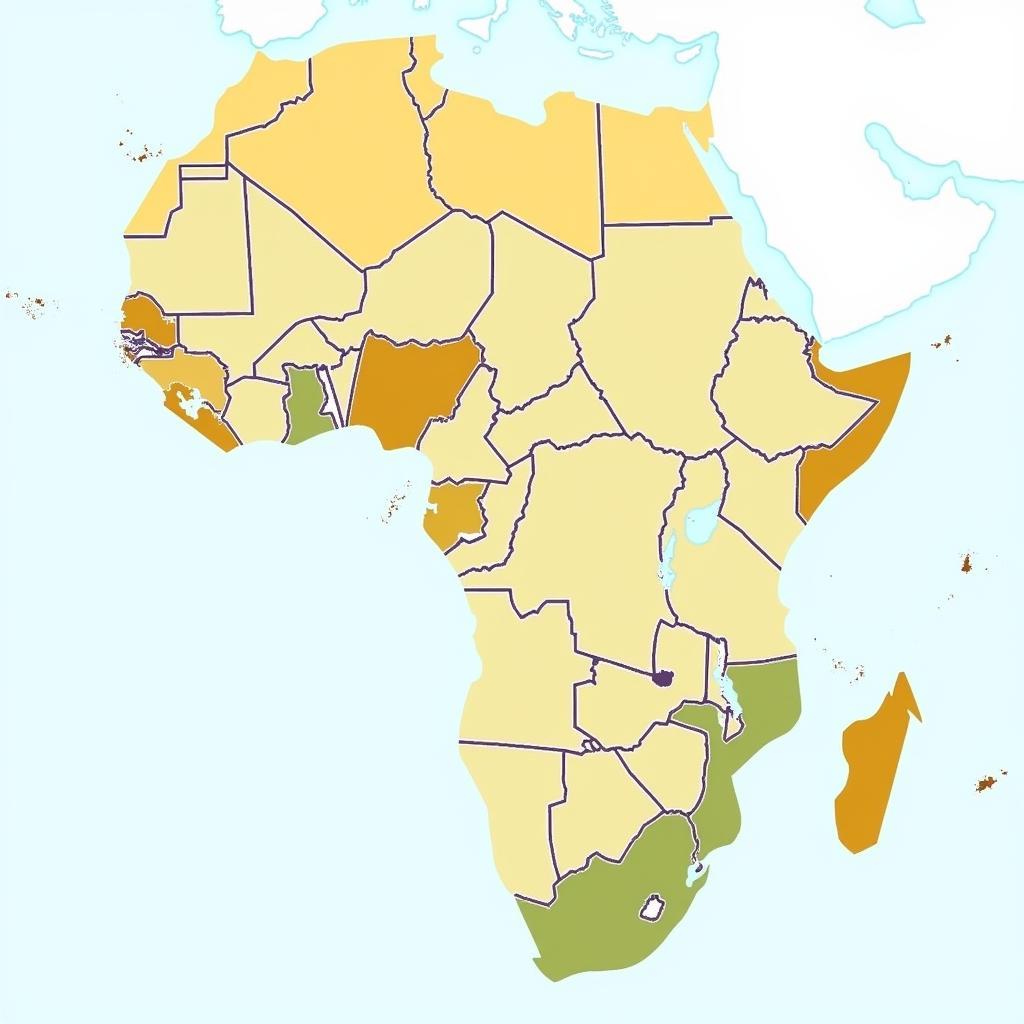African Fossil Human Anatomical Change: Unraveling Our Origins
African Fossil Human Anatomical Change reveals a fascinating journey of evolution. From the earliest hominins to the emergence of Homo sapiens, the fossil record tells a compelling story of adaptation, innovation, and ultimately, the development of our unique human traits. This journey through time encompasses millions of years and showcases remarkable transformations in skull shape, brain size, limb proportions, and overall body structure.
The Cradle of Humankind: Tracing Anatomical Shifts in Early Hominins
The African continent is aptly named the “Cradle of Humankind,” as it holds the richest collection of hominin fossils. These discoveries provide crucial evidence for understanding the anatomical changes that occurred over millions of years. Starting with Ardipithecus ramidus (Ardi) and Australopithecus afarensis (Lucy), we see the initial shifts towards bipedalism, a defining characteristic of hominins. These early hominins displayed a mixture of ape-like and human-like features, with smaller brain sizes than later hominins but clear evidence of upright walking.
The subsequent evolution of Australopithecus africanus and Paranthropus species saw further adaptations. While still possessing relatively small brains, these hominins developed robust jaws and teeth, suggesting a diet that included tougher plant materials. This dietary adaptation led to changes in skull structure, including pronounced cheekbones and sagittal crests. These anatomical changes reflect the diverse environments early hominins inhabited and their evolving strategies for survival.
 Australopithecus Skull Evolution Over Time
Australopithecus Skull Evolution Over Time
The Emergence of Homo: Key Anatomical Changes and Evolutionary Milestones
The transition to the genus Homo marks a significant leap in human evolution, characterized by substantial anatomical changes. Homo habilis, the “handy man,” exhibited an increase in brain size and evidence of tool use, suggesting a shift towards greater cognitive abilities. Homo erectus displayed even larger brains, longer legs, and shorter arms, indicating enhanced bipedalism and the capacity for long-distance travel. This species was also the first hominin to migrate out of Africa, further diversifying the human lineage.
The emergence of Homo heidelbergensis and Homo neanderthalensis showcases further anatomical refinements. Homo neanderthalensis, in particular, possessed a robust build, large brains, and adaptations to colder climates. These anatomical features reflect their successful adaptation to the challenging environments of Ice Age Europe.
 Homo Erectus Migration Out of Africa
Homo Erectus Migration Out of Africa
What are the most significant anatomical changes observed in the Homo genus?
The most significant anatomical changes in the Homo genus include increased brain size, reduction in jaw and tooth size, lengthening of legs and shortening of arms, and a more gracile overall build.
The Arrival of Homo sapiens: Defining Our Unique Anatomical Features
The appearance of Homo sapiens represents the culmination of millions of years of human evolution in Africa. Homo sapiens exhibits a distinct set of anatomical features, including a large, rounded braincase, a flat face, a prominent chin, and a slender body build. These features distinguish us from earlier hominins and reflect our advanced cognitive abilities, complex social structures, and capacity for language and symbolic thought. The development of these unique traits allowed Homo sapiens to thrive in diverse environments and ultimately become the dominant species on Earth.
Dr. Fatima Mkwizu, a renowned paleoanthropologist at the University of Dar es Salaam, notes, “The fossil record from Africa provides invaluable insights into the gradual emergence of our species. Each discovery sheds new light on the intricate puzzle of human evolution.”
 Homo Sapiens Skull Compared to Other Hominins
Homo Sapiens Skull Compared to Other Hominins
Conclusion: The Ongoing Quest to Understand African Fossil Human Anatomical Change
The study of African fossil human anatomical change continues to be a dynamic and exciting field. New discoveries are constantly reshaping our understanding of the complex evolutionary journey that led to the emergence of Homo sapiens. As we delve deeper into the fossil record, we gain a greater appreciation for the remarkable transformations that have shaped our species and continue to inspire awe and wonder.
FAQ
- What is a hominin? A hominin refers to any species belonging to the human lineage after the split from chimpanzees.
- Where were the earliest hominin fossils found? The earliest hominin fossils were discovered in East Africa, primarily in Ethiopia, Kenya, and Tanzania.
- What is bipedalism? Bipedalism is the ability to walk upright on two legs.
- How do scientists determine the age of fossils? Scientists use various dating methods, such as radiocarbon dating and potassium-argon dating, to determine the age of fossils.
- What are some of the key anatomical differences between Homo sapiens and Neanderthals? Key differences include a larger, more rounded braincase in Homo sapiens, a less prominent brow ridge, and a more gracile build.
- Why is Africa considered the “Cradle of Humankind”? Africa is considered the “Cradle of Humankind” because it is where the earliest hominin fossils have been found, tracing the origins of our species back millions of years.
- What are some ongoing research areas in the study of human evolution? Ongoing research includes investigating the genetic relationships between different hominin species, understanding the role of environmental factors in human evolution, and exploring the development of complex behaviors like language and tool use.
Dr. Abdallah Said, a leading expert in African archaeology, adds, “The African continent holds the key to unlocking the mysteries of our past. Every new fossil discovery contributes another piece to the intricate puzzle of human evolution.”
Other Questions?
Have other questions about human evolution or other aspects of African Life? Explore our website for further articles on related topics. You can also find information on African art, music, cuisine, and cultural traditions.
Contact us for assistance: Phone: +255768904061, Email: kaka.mag@gmail.com or visit us at: Mbarali DC Mawindi, Kangaga, Tanzania. We have a 24/7 customer service team.


